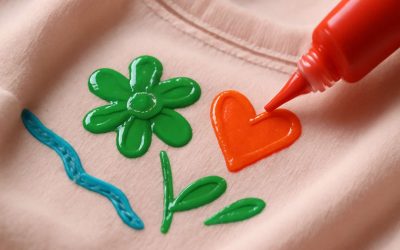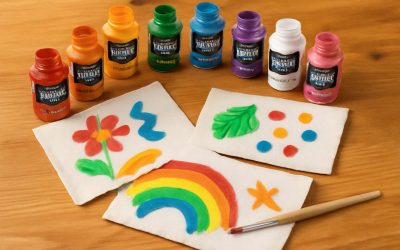Painting on fabric is a fun, creative activity that allows you to create unique clothing and accessories. Unlike ink or dye, permanent fabric paint bonds with the woven fibers of the material to create a permanent and durable design. Using the right type of paint and preparing the material properly helps to ensure that your designs will last for as long as you wear them. Whether you’re looking for something bright and vibrant or more subtle, there is a fabric paint to match your style.
The most important thing to remember when creating a painted fabric item is that the paint needs to be set with heat. The heat setting process bonds the paint with the fabric, making it permanent and resistant to cracking and peeling. This process can be done with a clothes dryer or an iron. Many fabric paints also require prewashing before use, which eliminates chemicals and residues that may hinder the adherence of the paint to the fabric fibers.
While some paints can be removed with acetone or other solvents, it’s best to avoid these as they can deteriorate the fabric and cause it to degrade and fade over time. Instead, you can try using bleach on the fabric to remove any unwanted marks or errors in the early stages of a project.
When it comes to selecting the right fabric paint for your projects, it’s important to choose a brand that is specially formulated for fabric. These paints usually contain fabric medium to help the paint adhere and blend well with the textile, as well as increase the durability of the final product. Additionally, the right fabric paint can enhance your workability by allowing you to apply the paint with brushes, stencils, and other tools.
Once you’ve selected a fabric paint for your project, it’s important to follow the instructions on the label to prepare the material. In general, this will involve prewashing the material to remove any chemicals or residues that may interfere with the adherence of the paint to the textile fibers, as well as removing any lint and dust from the surface. It’s also recommended to prewash the material again after applying the paint to make sure that it is fully saturated and bonded with the material.
Depending on the paint you’re using, the heat setting process may vary slightly. However, most products require that you wait two days before wearing the garment or displaying it, then heat set it with an iron or dryer to seal and harden the paint, making it permanently permanent.
It’s also important to protect your fabric-painted items from excessive sunlight or humidity, which can cause fading and deterioration over time. To prevent this, store or display your painted items in a shaded area away from direct sunlight, and apply UV protective sprays or coatings if necessary.



0 Comments